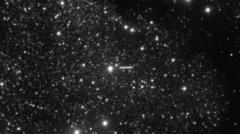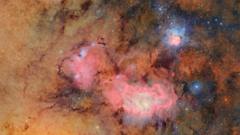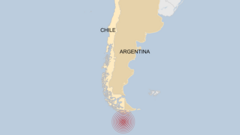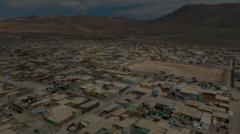A mystery interstellar object identified by astronomers last week is raising eyebrows in the scientific community, with suggestions that it could be the oldest comet ever observed. Dubbed 3I/Atlas, this enigmatic body may be as much as three billion years older than the formation of our own solar system, according to a research team from the University of Oxford. This marks only the third occasion on which humanity has detected an object originating from outside our solar system.
Preliminary findings were revealed at the UK’s Royal Astronomical Society's national meeting held on Friday in Durham. "We're all very excited by 3I/Atlas," expressed University of Oxford astronomer Matthew Hopkins. Recently completing his PhD studies, Hopkins stated that the comet could possibly reach an age of over seven billion years, categorizing it as an extraordinary interstellar traveler.
3I/Atlas was first detected on July 1, 2025, by the ATLAS survey telescope in Chile when it was approximately 670 million kilometers away from the Sun. Since that groundbreaking discovery, astronomers from around the globe have endeavored to unearth its trajectory and gather more details. Hopkins hypothesizes that 3I/Atlas emerged from the Milky Way's 'thick disk', a region inhabited by ancient stars that orbit in a different alignment than the Sun and its solar cohort.
The research team posits that 3I/Atlas is likely composed of considerable amounts of water ice due to its formation around an aging star. As it draws nearer to the Sun later this year, the solar energy is expected to heat its surface, resulting in spectacular jets of vapor and dust that could form a visible tail.
"This is an object from a part of the galaxy we've never seen up close before," stated Professor Chris Lintott, a co-author of the study. Lintott estimates there's a two-thirds probability that this comet predates the solar system and has been wandering through interstellar space ever since.
Enthusiasts can anticipate capturing views of 3I/Atlas through amateur telescopes as it approaches Earth later this year. Before 3I/Atlas, only two similar objects had been detected: 1I/'Oumuamua in 2017 and 2I/Borisov in 2019. With the imminent deployment of the powerful Vera C Rubin telescope in Chile, scientists aim to increase the discovery rate of interstellar objects, predicting that between 5 and 50 new arrivals may soon be identified once the telescope begins its comprehensive survey of the southern night sky later this year.

















